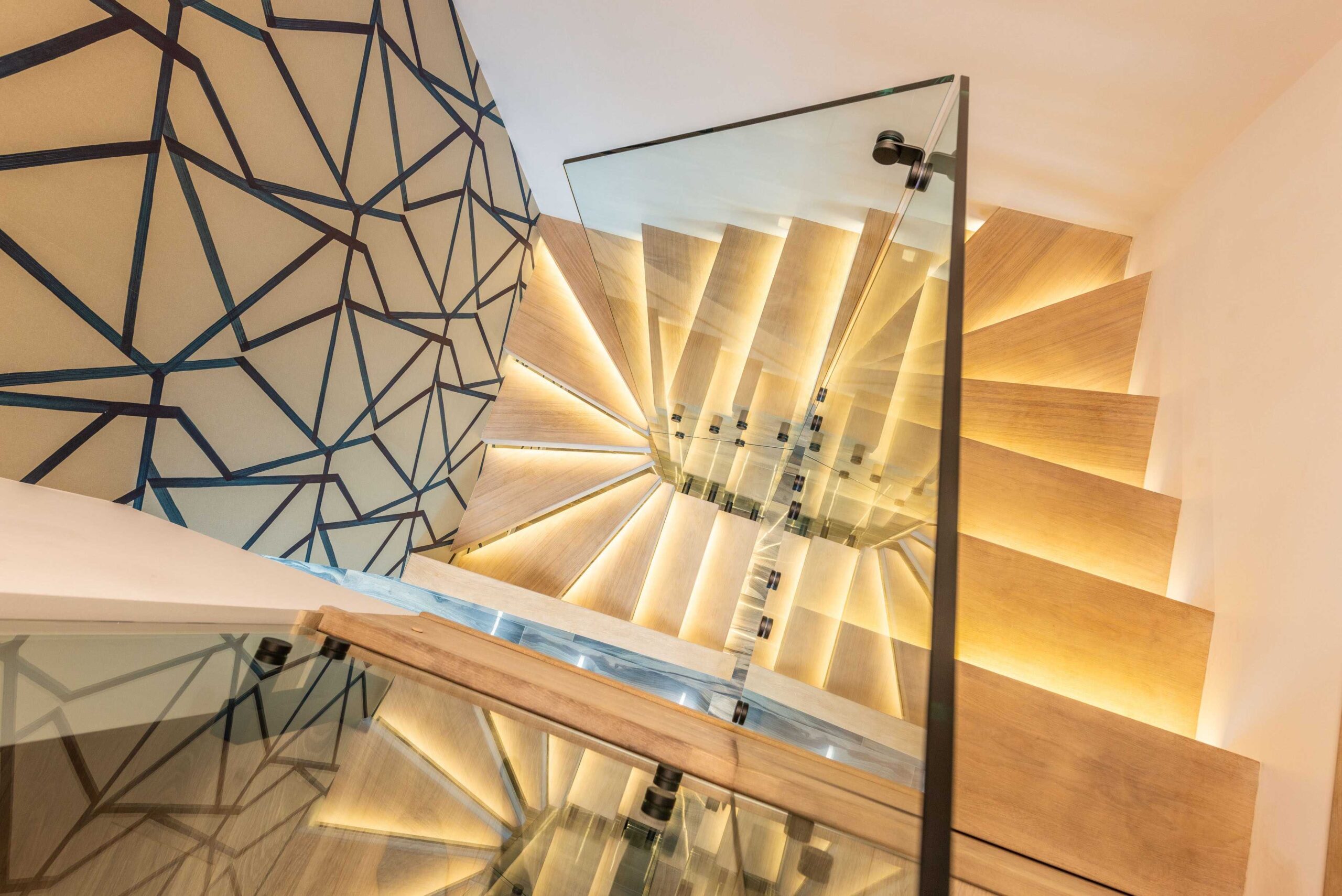
Stairs
Are you concerned about the safety of your stairs? If so, you’re not alone. Every year, countless people are injured in stair-related accidents. Though typically used for utilitarian purposes, stairs can also be an attractive and functional feature in a home. Unfortunately, they can also be dangerous, particularly for young children and the elderly. There are some ways to make your stairs safer and reduce the risk of injury.
When it comes to stairs a lot of things are involved including the number of stairs, the width and depth of each step, the height of each riser and stair treads, and also what is on and around the stairs. We are sharing some of the tips so that you or your loved one can be safe.
Install Handrails on Both Sides of the Stairs
This is especially important if there are young children or elderly people in your home. Handrails provide stability and can help prevent falls. Not only should you have handrails on both sides of the stairs, but they should be properly installed and sturdy.
Keep Stairs Clean and Clear
It’s important to keep your stairs free of clutter, especially if there are children or elderly people in your home. Clutter can create a tripping hazard and increase the risk of falls. It’s not only important to clean your stairs regularly, but you should also keep them clear of objects such as toys, shoes, and rugs.
Ensure There Is Adequate Lighting
Stairs can be dangerous if they are not properly lit. Make sure there is adequate lighting at the top and bottom of the stairs, as well as in any landings or hallways. But make sure not to overload electrical circuits with too many light fixtures.
Use Stair Treads and Runners
Stair treads and runners can help to reduce the risk of slips and falls. They also add traction and can help to protect your stairs from wear and tear. In general, stair treads and runners should have a deep tread, be securely attached, and fit the width and depth of your stairs. Usually, it’s best to buy stair treads and runners that are specifically designed for stairs.
Avoid Using Metal or Hardwood Stairs
Metal and hardwood stairs can be slippery, particularly when wet. If possible, try to use composite or non-slip stairs instead. In addition, be sure to use a non-slip adhesive or coating on metal and hardwood stairs.
Install Grab Bars
If you or a loved one has difficulty ascending or descending stairs, consider installing grab bars. Grab bars can provide stability and help to prevent falls. They are especially helpful for the elderly and those with mobility issues.
Be Careful With Pets
It’s important to be aware of the potential dangers that pets can pose to stairs. Pets, especially dogs, can run up and down the stairs, which can cause slips and falls. In addition, they can also jump on and off of stairs, which can lead to injuries. It doesn’t mean they can’t use stairs, all you have to do is train them correctly.
Be Aware of Your Surroundings
It’s important to be aware of your surroundings when using stairs. Watch out for hazards such as pets, cords, and other people. If you have small children, it’s important to keep a close eye on them when they are near stairs. Make sure they are not playing near the edge of the stairs and always use the handrail. Teach your children how to use the stairs safely and be aware of their surroundings.
Use Non-slip Stickers or Tapes
If you’re worried about slippery stairs, you can use non-slip stickers or tapes to increase traction. Just make sure to choose stickers or tapes that are specifically designed for stairs.
Install a Safety Gate
If you have young children, it’s a good idea to install a safety gate at the top and bottom of the stairs. This will help to keep them safe and prevent them from wandering off or falling down the stairs.
Next time you are using the stairs, be sure to keep these safety tips in mind. By following these simple tips, you can help to reduce the risk of falls and injuries. Remember, safety first!





